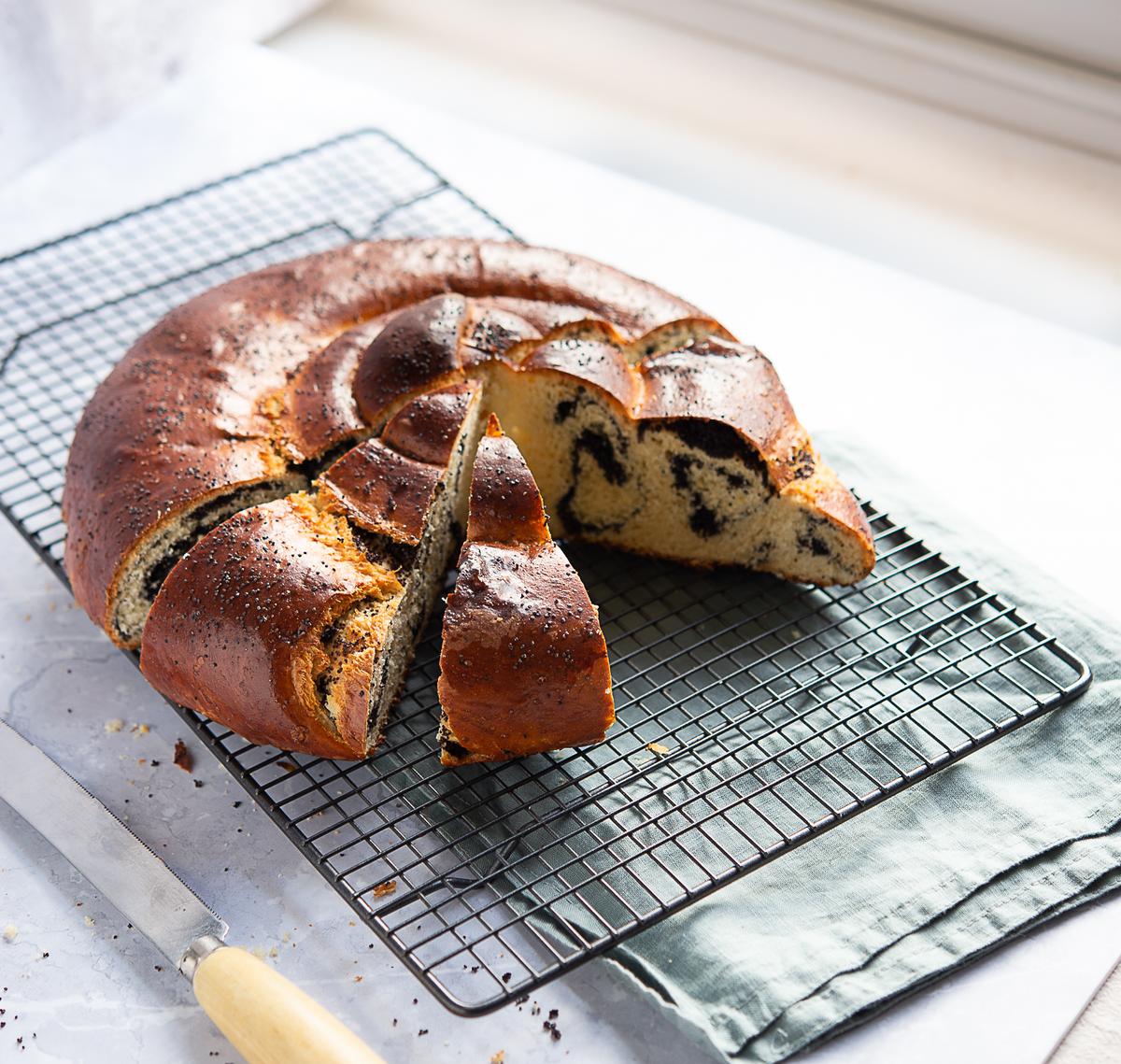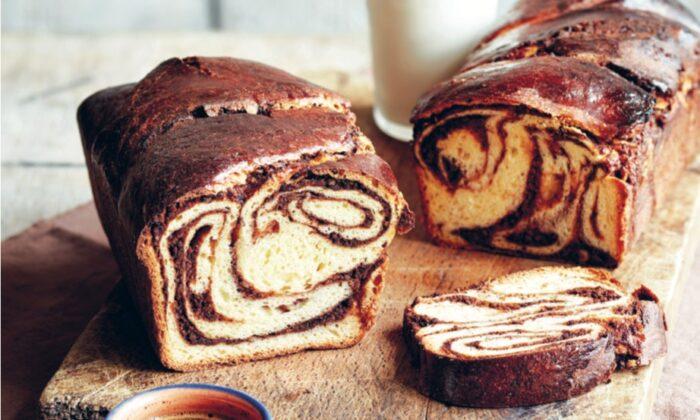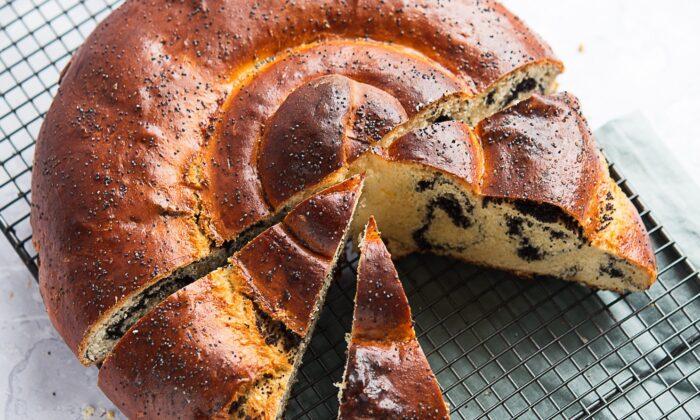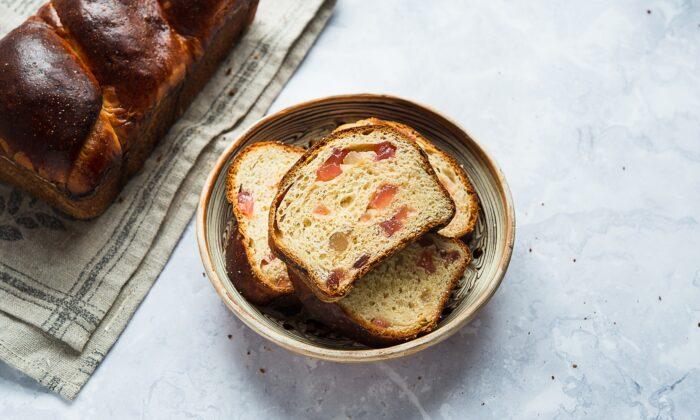Each December, a few days before Christmas Eve, cozonac is baked in homes across Romania. Since childhood, I knew that cozonac was something very special.
This sweet, enriched yeast bread owes much of its deliciousness to its swirls of sticky sultanas or bittersweet walnut paste and rum, two of the most popular fillings across the country. The dough is rich with butter, milk, and eggs, and perfumed with lemon zest and vanilla. It resembles golden silk as it’s mixed, and fills every house and bakery with a glorious aroma as it comes out of the oven.
Ritual and Reverence
Mum used to wake up at 4 a.m., while the apartment was engulfed in silence, to make the starter, called “maia.” An old tradition asks for the flour to be sifted before sunrise, in absolute silence and on an empty stomach.At 6 a.m., she would combine this starter with the rest of the ingredients, which she would have already weighed the night before and left out to allow to come to room temperature.
Then, the kneading began. It was done in a large enamel bowl, called a lighean, big enough to wash a baby in. Mum was making cozonaci for three families at some point, and the quantities were huge. She was also four and a half feet tall, so she had to place the bowl on a chair and use her arms together with her body weight to knead the dough.
After half an hour, it would be time to pour in the melted butter: bit by bit, incorporating it well after each addition, until the dough turned silky and elastic. Mum would tuck her hands under the dough and massage the butter into it, and then at just the right time, lift the dough up into the air and slap it right back down in the middle of the bowl. At this stage, someone needed to be in charge of holding the bowl in place. I used to volunteer, waking up just before 7 a.m. to join her. A child, free of worries, was considered a good omen for a successful bake.
By 8 a.m., the dough was finally allowed to rest, the bowl covered in blankets and placed on top of a cupboard in the kitchen. The room had to be very hot. There was no reliable central heating in those days, so we turned on the oven and kept the door open.
From this moment on, nobody was allowed into the kitchen, lest the opening of the door let in a draft. No loud noises were allowed, either, and if we wanted to talk, we had to whisper. And obviously, peeping in to see how the dough was doing was absolutely forbidden.
“Don’t disturb it,” Mum used to say, “and don’t praise it, either”—even if, by chance, we caught a glimpse of a roundish bump forming under the blankets, a sign that the dough was rising nicely. A word of praise or a moan would cast the curse of the evil eye, she would warn, and that meant game over.
At the end, mum would make the sign of the cross above each individual loaf before sliding it into the oven to bake. The same sign would be repeated three times before slicing a loaf, too.
These superstitions were an unwritten set of laws around making cozonac. A friend once told me that her mum was so convinced the evil eye ruined her first loaf that she never tried to make it ever again.
Keeping the Connection
It wasn’t until I moved to the UK that I made my own cozonac. Now, I bake it every year. It’s my way to stay connected to Romanian traditions, especially during celebrations like Christmas that feel very spiritual.On my own, I also have the freedom to follow fewer rules. For instance, I never start before dawn, since I tend to be a much better baker in the evening. Over time, I’ve simplified the method to suit my own pace. I’ve included my recipe in my book, “Carpathia: Food From the Heart of Romania,” and shared it here, too.
After I started to research and write about Romanian cuisine many years ago, I realized that our cozonac is part of a bigger Orthodox tradition of baking festive enriched breads.
We can likely connect cozonac to baba, a family of Eastern European breads made with enriched doughs that are often used in ceremonies. According to Alan Davidson’s “Oxford Companion to Food,” a baba may have originated in Ukraine in prehistoric times, when there was a matriarchal system in place, and the bread may have been used in rituals connected to land fertility. Some of these rituals were likely incorporated into Orthodox religious festivities, and the breads baked for Christmas and Easter; such is the case for Romanian cozonac, too. Its typical shape is a braided rectangular loaf, symbolizing infinity and eternity, and also perhaps ears of wheat and the traditional way in which women braid their hair.
There are also several variations on the recipe, just as popular across Romania—some common across the country, and others regional specialties.
One of them replaces the traditional walnut and rum filling with bits of Turkish delight—enticingly gooey and light, with a hue of the Middle East, my auntie’s favorite cozonac. Another adds smantana, sour cream, for a delightfully soft crumb. The resulting bread needs no filling—it’s left plain, simply brushed with a bit of honey while still warm and sprinkled with sugar. I combine both sour cream and Turkish delight in a recipe I’m also sharing here.
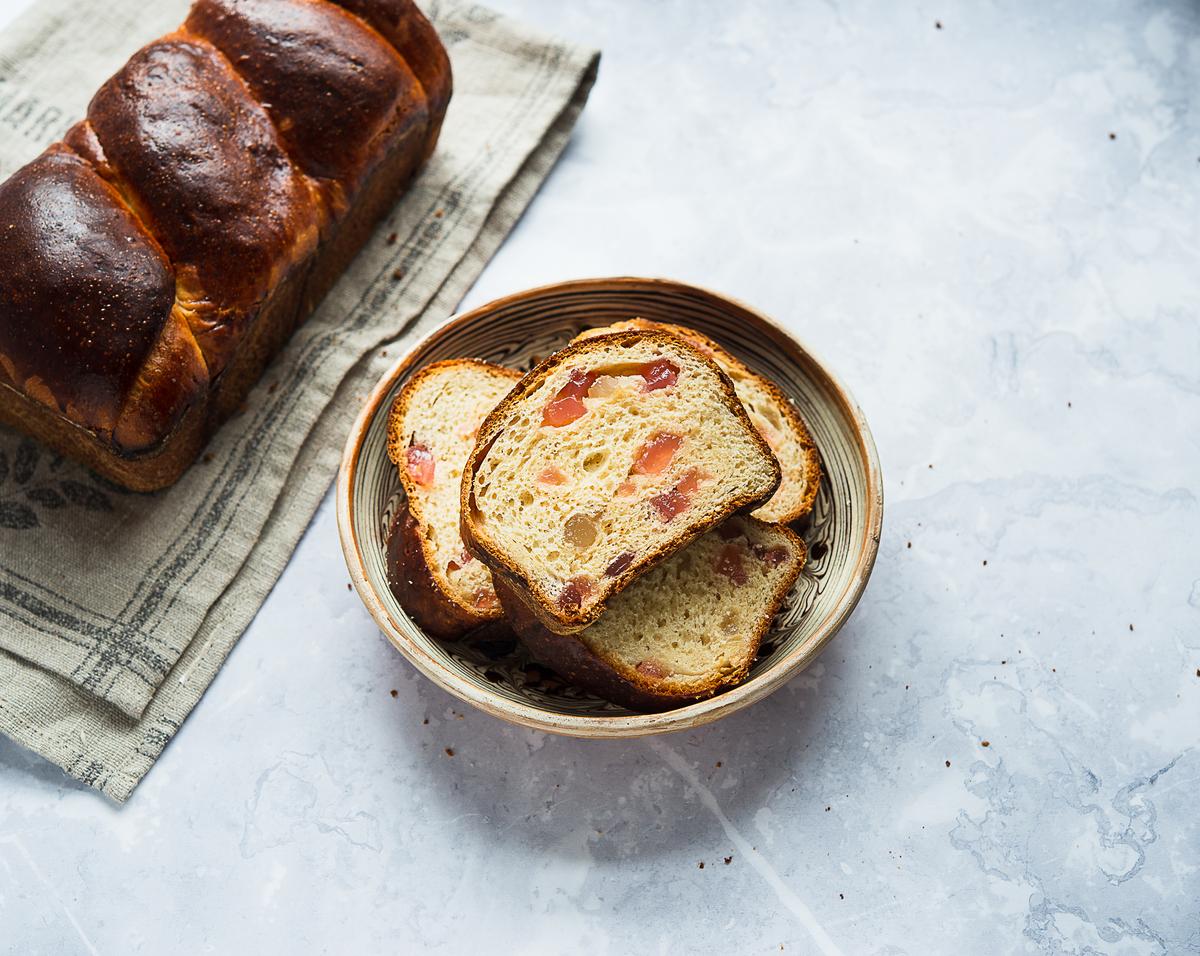
In Bucovina of northeastern Romania, alongside the traditional rectangular shape, people also bake a round braided or swirled loaf. This celebratory bread is called colac, meaning “round.” The filled dough is rolled and coiled onto itself like a giant seashell, perhaps a symbol of the sun or the cyclical nature of life.
My friend and food writer Dana Burlacu Visternicu, who writes about her family traditions, makes a version with poppy seeds. She follows a recipe from her grandmother, who used to grow poppies on a little patch of land at the back of the house.
“Poppies were a usual crop in people’s gardens, and they provided cheerful splashes of color and tasty seeds to put in cakes,” Dana said. I’m giving you her recipe, too, hoping that I did it justice.
